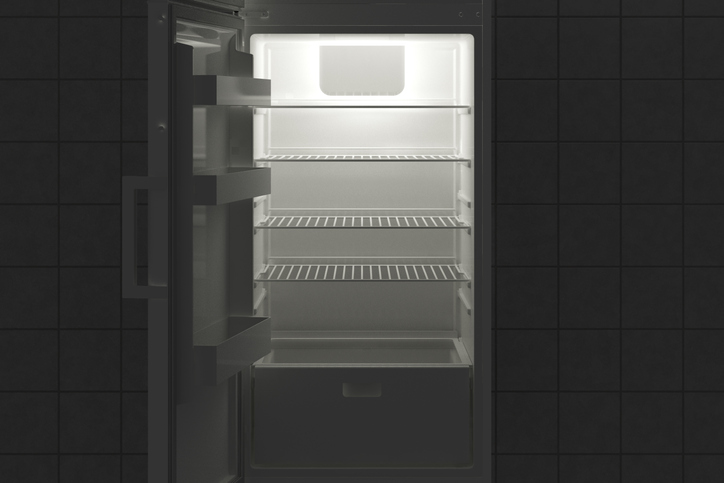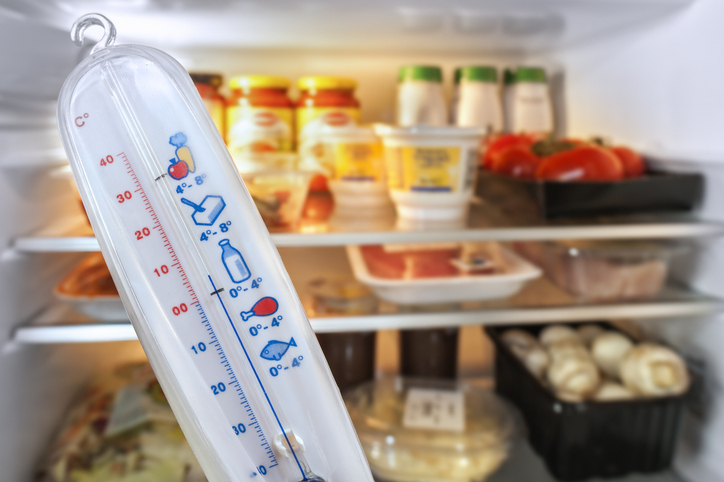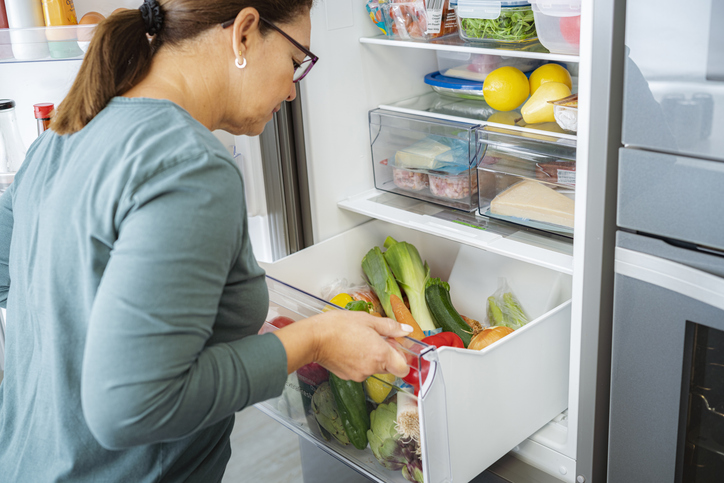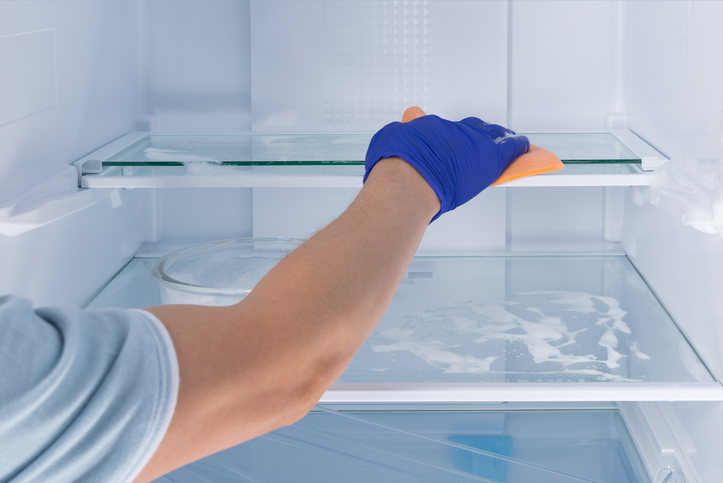Having a strategy to keep our refrigerators organized can help make meal planning easier by knowing exactly what we have and what we need.
If you have the average refrigerator, you will have shelves and storage compartments on the doors, fitted internal shelves and a drawer or two for fruits and vegetables. You may wonder to yourself “what goes where?” Below are a few tried and tested tips on how to set up your refrigerator. Keep in mind that what may work well for one person may not work so well for another. That is ok. Whatever works for you is best.
Clean Canvas
It helps to start with a clean canvas. First, empty your fridge of all its contents and toss any spoiled food or old leftovers. To know how to determine if your food is expired check out our past Food Safety 101 blog. Next wipe down the interior of your fridge with soapy water and pat dry. Be sure to clean the shelves and drawers as well. Cleaning these can sometimes be challenging. If possible, it is best to remove the drawers from the fridge and run under warm soapy water to remove any debris. Next, review all the food that you have removed from the fridge and categorize it into different sections. Meat that will be cooked immediately can be stored in the fridge but if intended to be used at a later date should be stored in the freezer. When storing meat in the fridge keep it separate from other food to avoid cross contamination.

Temperature
It is recommended the temperature of your refrigerator to be between 35-38 degrees Fahrenheit. This range will extend the freshness of your food as well as preventing bacterial growth.

Top Shelves
The top shelves are ideal for storing ready-to-eat foods, leftovers, cooked meats and prepared salads. All foods stored should be covered or kept in sealed containers to avoid contamination. Keeping leftovers and precooked/prepacked meals away from raw foods aids in reducing cross contamination and harmful bacteria. For more safety tips check out our Food Safety 101 blog.
Middle Shelves
The middle shelf is best for storing cheeses, butter, eggs, creams and most dairy products. By keeping dairy in the middle of your fridge as opposed to the doors you help those foods stay in a more consistent temperature range and are not affected by the opening and closing of the refrigerator doors. The middle shelves are also ideal for storing any beverages and other items that benefit from cooler temperatures.
Bottom Shelves
The bottom shelves tend to be the coldest part of the refrigerator and ideal for storing any fish, poultry or meat that will be cooked soon. Storing uncooked, raw meats and fish separately on the bottom shelf prevents fluids leaking and dripping down from the packaging which could contain harmful bacteria. Wrapping each item and storing them in a sealed container can prevent cross contamination with other foods.
Vegetable/Fruit Drawer
Typically, every fridge will have two drawers. One is considered high humidity and the other low humidity. Most vegetables will do best in the high humidity drawer; this is especially true for vegetables that wilt such as lettuce. Fruits, along with vegetables that are susceptible to rotting, may benefit more from being placed in the low humidity drawer. Tips such as wrapping vegetables, fruits and salads in paper or plastic wrap with air holes can prevent them from exposure to any contamination. Herbs can be wrapped in a damp towel before storing them to prevent them from drying out.

Refrigerator Door Shelves
The refrigerator door is the warmest part of the fridge. It is best to use these shelves to store foods that won’t spoil as quickly such as condiments, juices and other preserved foods as these items tend to have a longer shelf life.
Keeping Tidy
It is best to do a weekly quick clean to toss out expired or spoiled items and perform a more intense cleaning and organizational refresh every month or every few months. Keeping inventory of what you have and making a list that coincides with your grocery shopping days will make keeping order all the more worthwhile.

Did you find this blog post helpful? Please click the heart button!



